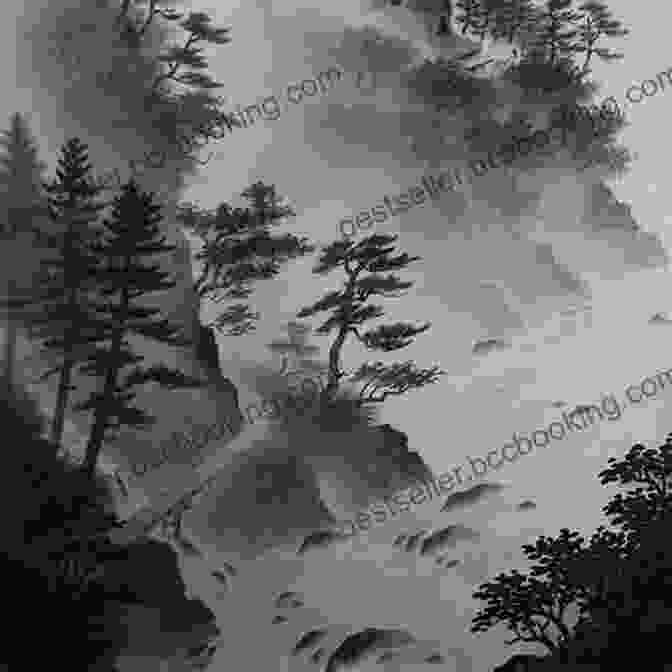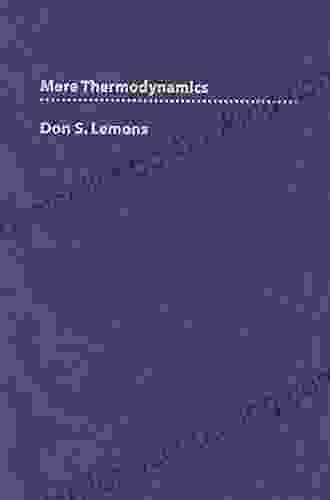The Art and Technique of Sumi Japanese Ink Painting


Sumi ink painting, an ancient Japanese art form, has captured the hearts and imaginations of artists and art enthusiasts for centuries. Its minimalist elegance and profound expressiveness have made it a beloved medium for depicting landscapes, nature, calligraphy, and spiritual themes. With its distinct brushwork, subtle gradations of ink, and evocative simplicity, Sumi painting offers a unique and captivating way to explore the beauty of the world around us.
4.3 out of 5
| Language | : | English |
| File size | : | 15469 KB |
| Text-to-Speech | : | Enabled |
| Screen Reader | : | Supported |
| Enhanced typesetting | : | Enabled |
| Print length | : | 142 pages |
History
The roots of Sumi ink painting can be traced back to ancient China, where it was used for calligraphy and artistic expression as early as the 3rd century BCE. The technique was introduced to Japan during the 6th century CE, where it quickly gained popularity as an artistic medium. Over the centuries, Sumi painting evolved into a distinct and refined art form, influenced by Japanese cultural traditions, Zen Buddhism, and the philosophy of wabi-sabi, which embraces the beauty of imperfection and the passage of time.
Materials
The essential materials for Sumi ink painting are few and simple, adding to the minimalist aesthetic of the art form. The primary material is sumi ink, a black ink made from soot or charcoal suspended in water. Sumi ink is available in various grades and concentrations, ranging from light and fluid to thick and viscous, allowing artists to create a wide range of tonal variations and expressive effects.
Sumi ink is applied to rice paper, a thin and absorbent paper made from the fibers of the paper mulberry tree. Rice paper has a unique texture that allows the ink to flow smoothly and create subtle gradations of tone. The brushes used in Sumi painting are typically made of bamboo or animal hair and are chosen for their flexibility and ability to hold a precise amount of ink. Brushes come in various sizes and shapes, each suited to different brushstrokes and artistic effects.
Technique
The technique of Sumi ink painting involves a delicate balance of control and spontaneity. The artist uses the brush to create lines, dots, and washes of ink, varying the pressure, speed, and direction of the brush to achieve different effects. The artist's hand movements and the amount of water added to the ink influence the flow, texture, and expressiveness of the brushstrokes.
One of the key techniques in Sumi painting is the use of graded washes, where the artist gradually adds water to the ink to create a range of tonal values from light to dark. This technique allows for the subtle depiction of depth, light, and shadow, creating a sense of atmospheric perspective and three-dimensionality. Another essential technique is dry brush painting, where a small amount of ink is applied to a dry brush, resulting in a textured, calligraphic effect.
Sumi ink painting often involves the use of negative space, where the areas left blank play a vital role in the composition. The artist carefully balances the positive and negative space to create a harmonious and visually engaging image. The interplay between the ink and the blank paper creates a sense of tension and dynamism, inviting the viewer to contemplate the relationship between form and void.
Aesthetics
Sumi ink painting is characterized by its minimalist aesthetic and profound expressiveness. The focus is on simplicity, asymmetry, and the beauty of imperfection. The artist strives to capture the essence of a subject rather than its literal representation, using a few carefully placed brushstrokes to evoke a sense of atmosphere, emotion, and spiritual connection.
The philosophy of wabi-sabi is central to the aesthetics of Sumi ink painting. Wabi-sabi embraces the beauty of transience, imperfection, and the passage of time. It encourages the artist to find beauty in the flaws and irregularities of life and to appreciate the simple and unadorned. This philosophy is reflected in the use of natural materials, the emphasis on asymmetry, and the acceptance of the inevitable decay and change.
Sumi ink painting often depicts themes of nature, such as landscapes, flowers, birds, and animals. Artists use the medium to express their connection to the natural world and to explore the cyclical nature of life and the beauty of the seasons. Sumi painting also has a strong spiritual dimension, with many artists using the art form to express their inner thoughts, emotions, and spiritual experiences.
Contemporary Sumi Ink Painting
In contemporary times, Sumi ink painting continues to evolve and adapt, while maintaining its core principles of minimalism and expressiveness. Contemporary artists are pushing the boundaries of the art form by experimenting with new techniques, materials, and subject matter.
Some artists are incorporating elements of other artistic traditions, such as Western abstract painting and calligraphy, into their Sumi ink works. Others are exploring the use of non-traditional materials, such as acrylics, watercolor, and mixed media, to create innovative and thought-provoking compositions. Contemporary Sumi ink artists are also addressing contemporary themes, such as urbanization, environmentalism, and social issues, through their work.
Sumi ink painting is a captivating and evocative art form that has captured the imaginations of artists and art lovers for centuries. Its minimalist aesthetic, profound expressiveness, and connection to nature and spirituality make it a unique and enduring medium of artistic expression. Whether you are a seasoned artist or a curious beginner, the world of Sumi ink painting offers endless opportunities for exploration, discovery, and artistic fulfillment.
By embracing the principles of simplicity, asymmetry, and wabi-sabi, and by experimenting with different techniques and materials, you can embark on your own Sumi ink painting journey and create beautiful and meaningful works of art.

4.3 out of 5
| Language | : | English |
| File size | : | 15469 KB |
| Text-to-Speech | : | Enabled |
| Screen Reader | : | Supported |
| Enhanced typesetting | : | Enabled |
| Print length | : | 142 pages |
Do you want to contribute by writing guest posts on this blog?
Please contact us and send us a resume of previous articles that you have written.
 Book
Book Novel
Novel Page
Page Chapter
Chapter Text
Text Story
Story Genre
Genre Reader
Reader Library
Library Paperback
Paperback E-book
E-book Magazine
Magazine Newspaper
Newspaper Paragraph
Paragraph Sentence
Sentence Bookmark
Bookmark Shelf
Shelf Glossary
Glossary Bibliography
Bibliography Foreword
Foreword Preface
Preface Synopsis
Synopsis Annotation
Annotation Footnote
Footnote Manuscript
Manuscript Scroll
Scroll Codex
Codex Tome
Tome Bestseller
Bestseller Classics
Classics Library card
Library card Narrative
Narrative Biography
Biography Autobiography
Autobiography Memoir
Memoir Reference
Reference Encyclopedia
Encyclopedia Dora Ohrenstein
Dora Ohrenstein Dianne Stewart
Dianne Stewart Don Croner
Don Croner Dinah Dye
Dinah Dye Dirk Smillie
Dirk Smillie Dennis Banks
Dennis Banks Derek Botelho
Derek Botelho Diana Murray
Diana Murray Donez Xiques
Donez Xiques Drew Ramsey M D
Drew Ramsey M D Donald Kasen
Donald Kasen Deray Mckesson
Deray Mckesson Donald Keene
Donald Keene Derek Prince
Derek Prince Donald Keyn
Donald Keyn Dev Petty
Dev Petty Donald A Ritchie
Donald A Ritchie Douglas J Fiore
Douglas J Fiore Deepika Chamoli
Deepika Chamoli Deborah Lau
Deborah Lau
Light bulbAdvertise smarter! Our strategic ad space ensures maximum exposure. Reserve your spot today!

 Steven HayesUnlock Your Digital Marketing Potential: A Comprehensive Guide for Aspiring...
Steven HayesUnlock Your Digital Marketing Potential: A Comprehensive Guide for Aspiring... Felix CarterFollow ·7.9k
Felix CarterFollow ·7.9k Evan SimmonsFollow ·7.3k
Evan SimmonsFollow ·7.3k Jaime MitchellFollow ·18.8k
Jaime MitchellFollow ·18.8k Ryan FosterFollow ·14.9k
Ryan FosterFollow ·14.9k Michael SimmonsFollow ·11.9k
Michael SimmonsFollow ·11.9k Allen GinsbergFollow ·15.8k
Allen GinsbergFollow ·15.8k Harold PowellFollow ·16.5k
Harold PowellFollow ·16.5k David MitchellFollow ·10.7k
David MitchellFollow ·10.7k

 J.D. Salinger
J.D. SalingerThe Quintessential American Cook: A Culinary Journey with...
Prologue: The Man...

 Franklin Bell
Franklin BellIntroducing Romanticism: A Literary Guide to the Romantic...
Romanticism was a...

 Denzel Hayes
Denzel HayesThe Untold And Inspiring Story Of Eric Liddell Hero Of...
The Olympian Who Defied...

 Oscar Wilde
Oscar WildeDiscover the Enchanting Adventure of Arthur Woody and the...
Immerse Yourself in a World of Mystery,...

 Fernando Bell
Fernando BellAlibaba: The House That Jack Ma Built
The Rise of the Chinese E-Commerce Giant ...

 Leo Tolstoy
Leo TolstoyCrossing Continents: A History of Standard Chartered Bank
By John M. Smith Crossing...
4.3 out of 5
| Language | : | English |
| File size | : | 15469 KB |
| Text-to-Speech | : | Enabled |
| Screen Reader | : | Supported |
| Enhanced typesetting | : | Enabled |
| Print length | : | 142 pages |










